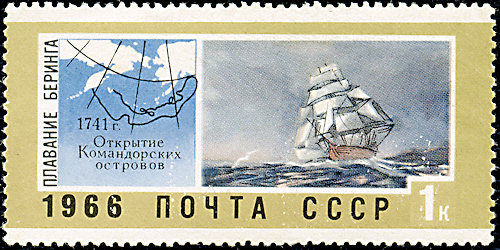The Discovery of Steller's Seacow
Our Saga begins half way through the 16th century: The Mongolian Empire had disintegrated and the vast empty Siberia awaited a new conqueror. 1558 Tsar Ivan IV, "The Terrible", authorized the merchant family Stroganov to colonialize and exploit Siberia, who did this ruthlessly with the help of a bunch of Cossacks.
Therefore, when Peter I,
"the Great", came into power in 1682, Siberia was up to the Pacific coast spotted with a few ostrogs
*)fortified settlements and cart-tracks, generally still it was a large wilderness with a few indigene tribes.
To further exploit it, Peter needed more information about the area's potential. For this purpose the Russian Academy of Sciences initiated two consecutive "Kamchatka Expeditions" under the command of the Danish Captain Vitus Bering, with the German scientists Gerhard Friedrich Mueller and Johann Georg Gmelin, the French Delisle de la Croyère and others, commissioned to study nature and native ethnics, to explore resources and to chart the area to the Pacific Ocean and beyond. This enterprise was by far the greatest scientific venture of the 18th Century, and was later named the “Great Nordic Expedition”.
After Peter's death 1725 his Siberian projects were for the present continued, and on the 29th May 1741 the two briggs St. Peter and St. Paul set sail from the Kamchatkan port Petropawlowsk, for an easterly course. Doctor on Bering's ship St. Peter was the 33 years old German medicus and naturalist Georg Wilhelm Steller.

Route and drawing of the St. Peter on a Russian stamp
The two ships lost sight of each other, and on the 12th July the St. Peter alone dropped anchor near Kayak Island in the Gulf of Alaska. The eager Steller was only allowed to explore the island for a few hours, upon which he expressed great disappointment and anger about the poor scientific outcome of his short excursion.
